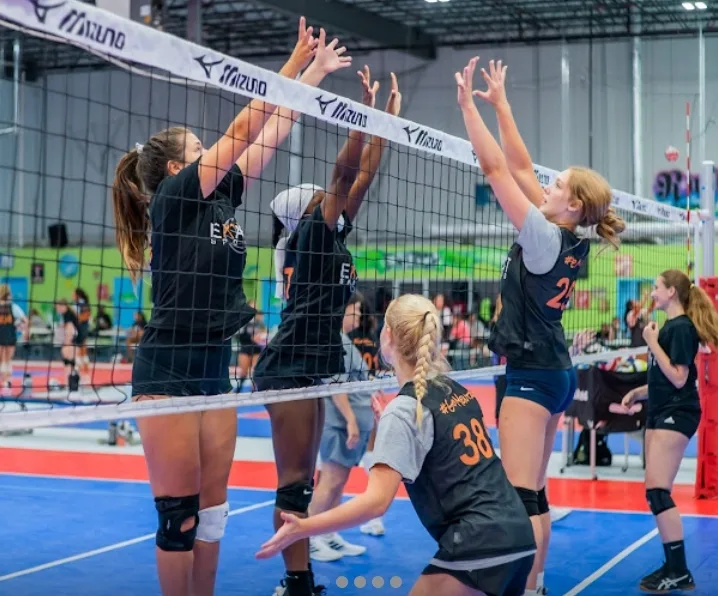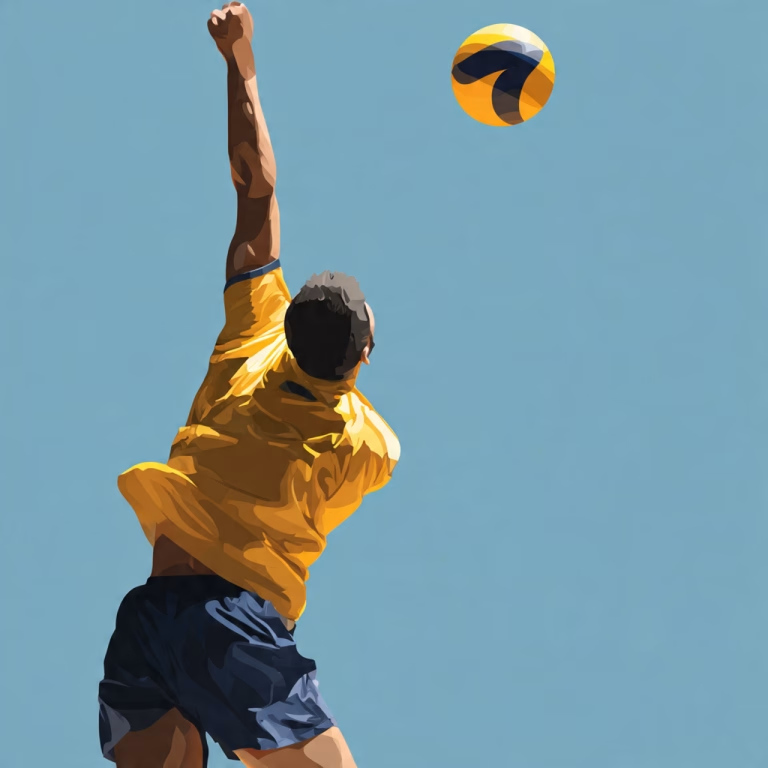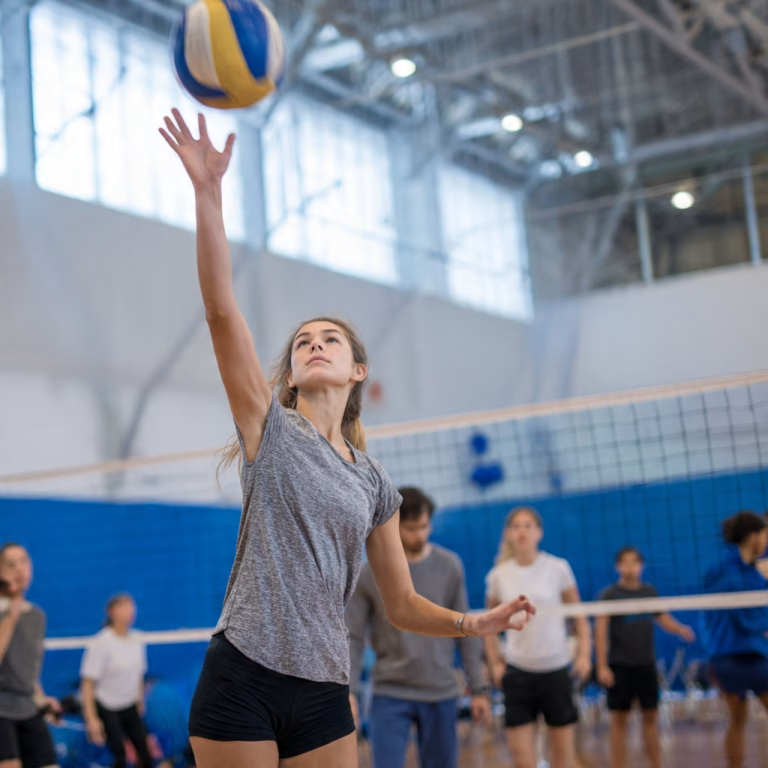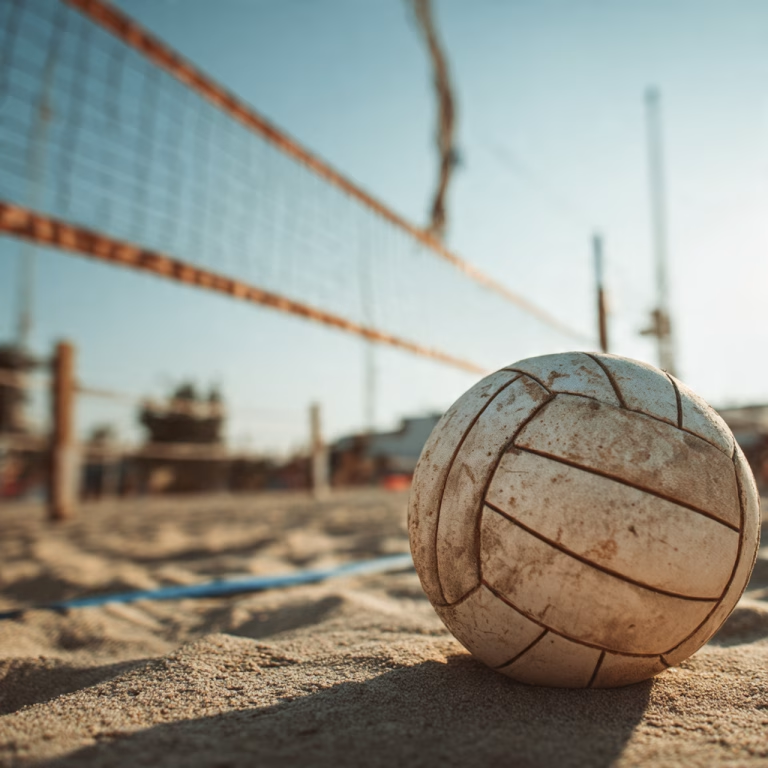Understanding the various roles in volleyball is crucial for players and coaches alike for building an effective team and achieving victory. In volleyball, each player has a specific position and responsibility, working together like a well-oiled machine to outmaneuver their opponents.
Let’s talk about volleyball players and their roles. In volleyball, player versatility is highly valued since they change positions during the game. However, in recent times, there has been a trend toward strict specialization, especially for liberos and setters. But let’s go over everything step-by-step.
Positions in Volleyball
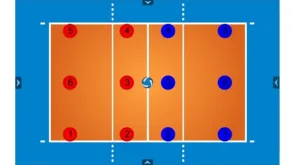
Every professional volleyball team includes the following positions:
- Opposite hitter
- Setter
- Libero
- Middle blocker
- Outside hitter
- Defensive specialist
Read more: Volleyball Players Positions and Roles Explained
Primary Roles in Volleyball
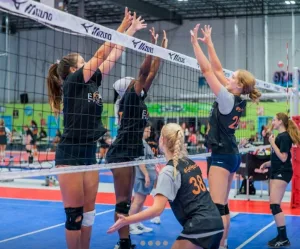
Every player on a volleyball team has a unique role. Here’s a breakdown of the major positions and roles in volleyball:
Opposite Hitter: Roles in Volleyball
The opposite hitter attacks from position 4 and performs blocking. They often assist the setter and can take part in serving, positioning themselves in zone 1. An opposite hitter should possess a powerful vertical jump and impressive height.
See Also: How to Jump Higher in Volleyball
Setter: Roles in Volleyball
The setter’s task is to pass the ball to an attacking player and, if needed, perform a block. Their primary positions are zones 2 and 3. Although the setter doesn’t participate in attacks directly, the success of the team’s offensive play depends on their accurate passes.
Libero: Roles in volleyball
The libero supports the team’s defense and reception, playing in zones 6, 5, and 1. They don’t actively participate in attacks but focus on delivering the ball accurately to the setter. In critical situations, the libero acts as backup and can pass the ball instead of the setter. Wearing a distinct jersey, the libero stays in the back row and is not involved in attacks.
Middle Blocker: Roles in Volleyball
The middle blocker doesn’t receive serves but performs powerful serves, blocks, and attacks at a fast pace. They need quick reflexes and height to effectively block the opponent’s attacks. Sometimes, the middle blocker swaps with the libero (most often after serving).
Outside Hitter: Roles in Volleyball
The outside hitter is a versatile player involved in attack, block, and reception. They operate in zones 1, 5, and 4. The outside hitter can assist the libero in defense and provide accurate passes for the next attack. Typically, teams have two outside hitters.
See Also: best Volleyball drills
Defensive Specialist: Roles in Volleyball
A defensive specialist substitutes for front-row players to strengthen the team’s defense.
Responsibilities: assist with digging and passing.
Key Skills: sharp defensive instincts and excellent passing accuracy.
How Roles Work Together for Team Success
In volleyball, teamwork is everything. The setter works closely with the hitters, ensuring they get perfect sets to launch their attacks. The blockers protect the net and stop the opponent’s attacks. On defense, the libero leads the back row, working with the defensive specialist to dig out tough balls. Each role contributes in a unique way, but together, they create a well-oiled team that functions seamlessly.
Choosing the Right Role for You
Choosing the best role in volleyball depends on your strengths and skills.
If you have quick reflexes and love playing defense, try out as a libero or defensive specialist.
If you enjoy scoring points and blocking, becoming an outside hitter or opposite hitter could be a good fit.
If you like taking charge and making decisions, the setter role might be perfect for you.
Example: A tall player with strong jumping ability might excel as a middle blocker, while a shorter, agile player could thrive as a libero.
Common Challenges in volleyball Roles
Each role comes with its own challenges.
- Setters face the pressure of making quick decisions on every play.
- Outside hitters must be consistent attackers, even when tired.
- Liberos need to stay sharp throughout the match, even though they don’t score points.
These challenges can be tough, but with practice and determination, players can overcome them.
Interesting Facts
- Players’ positions are determined by the time they reach 16–17 years old.
- Coaches pay special attention to physical attributes like jumping ability, weight, and height when assigning positions.
- While most technical skills are developed through training, raw talent is essential for powerful hits and quick thinking.
- A height below 190 cm reduces the variety of positions a player can take.
FAQs: Understanding Roles in Volleyball
What is the most important role in volleyball?
There is no single “most important” role since volleyball relies heavily on teamwork. However, the setter plays a crucial part because they control the tempo of the game. Without a good setter, the team’s attack can fall apart.
Can a libero become a setter during a match?
Yes, but only in certain situations. A libero is allowed to set the ball, but they must stay behind the attack line. If they step over the line while setting, the attack will not count.
How does a 5-1 formation affect player roles?
In a 5-1 formation, there is one setter who plays throughout the match, while five hitters rotate around them. This formation helps create consistent attacks but puts more pressure on the setter, who plays both front and back row.
What is the difference between an outside hitter and an opposite hitter?
The outside hitter attacks from the left side and also helps in defense. The opposite hitter plays on the right side and focuses more on attacking and blocking, offering support to the setter.
How can I improve my skills in a specific role?
To improve, practice drills specific to your role. For example: Setters can work on accuracy by practicing quick sets with a partner.
Hitters should focus on timing their jumps and improving spike technique.
Liberos can practice passing drills to sharpen their defensive skills.
Conclusion: Mastering Your Role in Volleyball
Every position in volleyball is important, and mastering your role takes practice, patience, and teamwork. Whether you’re setting up attacks, diving for saves, or blocking powerful spikes, each role has a unique part to play in the team’s success. By understanding the roles in volleyball and finding the one that suits you best, you can contribute to your team and enjoy the sport to its fullest.

